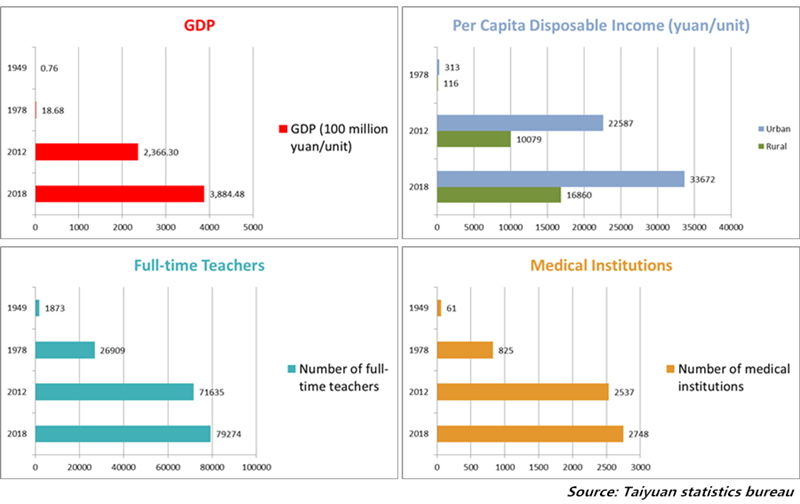Taiyuan sees great growth over past 70 years
Updated: 2019-09-06

A figure for economic and social statistics of Taiyuan city [Photo/chinadaily.com.cn]
Taiyuan, capital of Shanxi province, has expanded in leaps and bounds over the past seven decades, according to local officials.
The city has benefited from the implementation of an innovation-driven and talent-support development strategy, they said. This has increased investments in science and technology innovation and created a business environment that encourages innovation, with the number of local tech small and medium-sized enterprises growing rapidly.
The city has also boosting its industrial development by focusing on developing clusters of advanced equipment manufacturing, new materials and information technology industries. As a result, the structure of the primary, secondary, tertiary sectors of the economy has been further optimized.
A series of reforms have made significant progress, officials said.
The reform of the rural collective property rights system has been fully carried out. The rural property rights transfer market has almost covered all counties and towns in the city. Local Yangqu county was recognized by the State Council for its achievements in the comprehensive reform of public hospitals, being the only one rated in Shanxi province.
Taiyuan has been focusing on its furthering opening up by seizing strategic opportunities brought about by Belt and Road Initiative and Beijing-Tianjin-Hebei coordinated development strategy.
The city has established friendships with 12 cities across five continents and continues to expand foreign trade and international production cooperation with 161 countries and regions being trade partners. The value of imports and exports hit 108.639 billion yuan ($15.34 billion) last year and foreign direct investment spent amounted to $8.63 million in 2018.
In addition, Taiyuan has been implementing a successful rural revitalization and development strategy, with its poverty incidence rate dropping to 0.18 percent in 2018 from 8.5 percent in 2017.
While boosting local economy and improving residents' living standards, the provincial capital has also paid attention to its environmental protection and improvement.
It has taken measures such as coal production controls, pollution treatments, vehicle emissions management and dust reduction to enhance air quality. Meanwhile, the local water environment has been improved as the city has carried out treatment and landscaping projects on the Fenhe River and Jinyang Lake.

